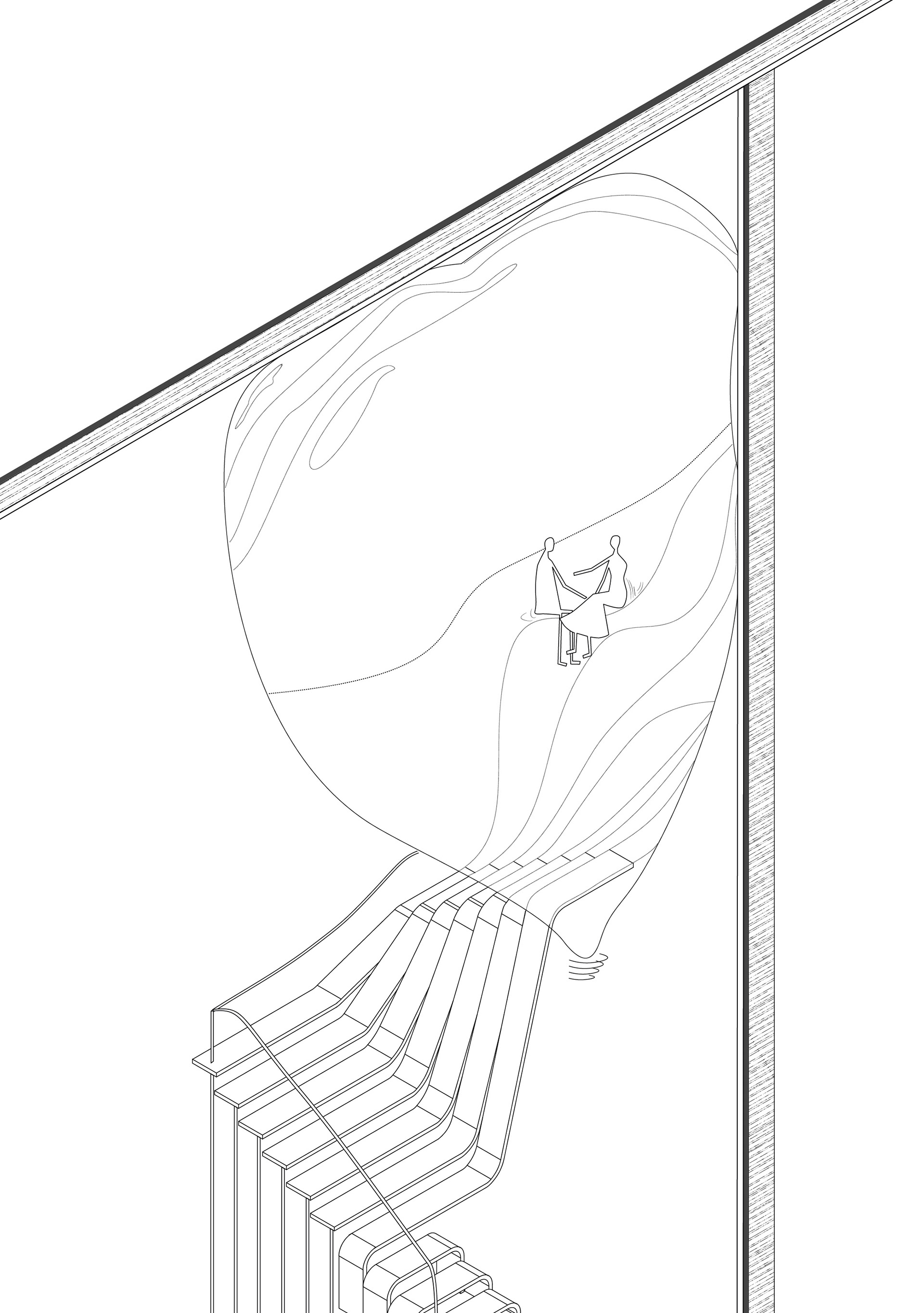XL. The XL representation shows a known, familiar state of these elements in space, which emphasizes the conventional, universal understanding of what an element is.
XS. Opposed to the need for a monumental structure, the project explores the potential of the elements through an XS scale, while aiming to express balances that allow social coexistence. These elements stand against separation processes, seeking for alternative ways to live together by creating scenarios that make reference to the stability or instability of living within a society. The search for balance/unbalance in basic human activities is expressed through proportions, the unification between the different and the unknown, the pace, the juxtaposition and trust between elements, their dependence and independence that can (or could) hold urban situations within daily life in reality. The alternative reality of the elements encourages a second look at the built-in architecture, which raises questions about the possibilities of reality and imagination in space through basic means, by talking about today’s society and how we live within it.

CONTROL. A net becomes a livable space that allows alignment between infinite information that is up on the network and our attempt to catch it and control it.

MALEABILITY. One person’s sitting spot is the result of a balance between a space that allows change, but only within the limits it defines for us beforehand.

BALANCE-UNBALANCE. The basic understanding that marks the development of the project: each element can be detached from its context and restructured into new configurations.

TRANSITION. The balance lies within the possibility to experience an irrevocable phenomenon - death - within a dynamic system.

HARMONY. Visual and spatial balance, where two sides of different spaces constantly coexist, confronted by each other’s similarities and differences.

DONATION. The house as a stage for public activity, the way it donates its space for collective well- being. Balance between the private intention and the public interaction, where one gives, the other receives.

POWER. A balance between the speaker and its crowd, it supports the speaker. Without the crowd, the speaker has no credibility, so it can’t stand alone. He relies on the power of the people.

CYCLE. Balance between the natural course of the water (falling) and its power to simultaneously give life.
